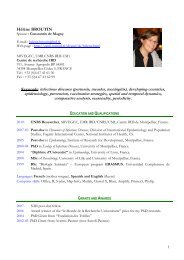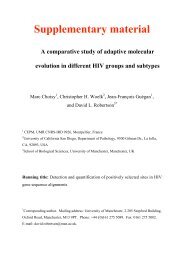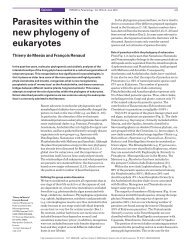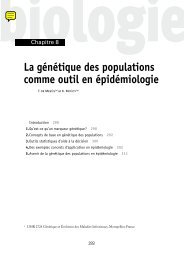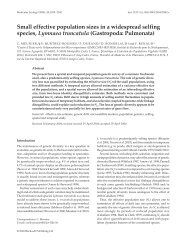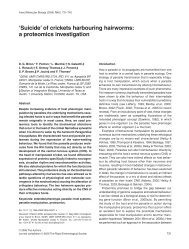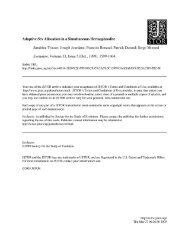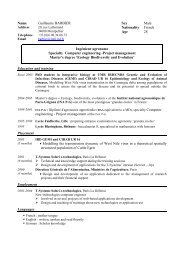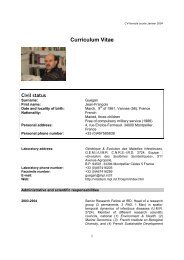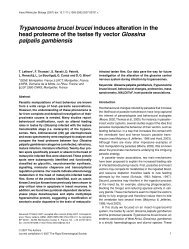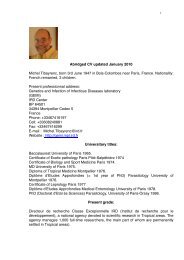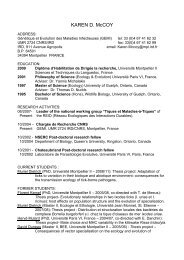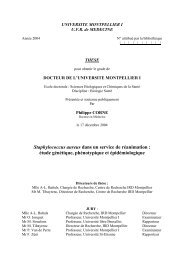écologie des virus influenza aviaires en Camargue - IRD
écologie des virus influenza aviaires en Camargue - IRD
écologie des virus influenza aviaires en Camargue - IRD
You also want an ePaper? Increase the reach of your titles
YUMPU automatically turns print PDFs into web optimized ePapers that Google loves.
Chapitre IIIbe<strong>en</strong> victims of recurr<strong>en</strong>t outbreaks due to HP AIV [11], g<strong>en</strong>erally limited to localised areasbut responsible for high mortality and substantial economic losses. By contrast, wild birdshave rarely be<strong>en</strong> involved in HP AIV infections. Before 1996, only one HP AIV outbreak wasdocum<strong>en</strong>ted in the wild, leading to the death of c. 1 300 common terns (Sterna hirundo) insouth Africa [12]. Since that date, the emerg<strong>en</strong>ce and the spread of the Asiatic lineage HPH5N1, first discovered in domestic geese in southern China in 1996, has be<strong>en</strong> responsible forthe death of more than t<strong>en</strong> thousand wild birds, sometimes through mass mortality ev<strong>en</strong>ts(e.g. lake Quinghai, China, in MayJune 2005; [13 15]). Detection of HP H5N1 in freelivingwild birds remains however a rare ev<strong>en</strong>t. Ext<strong>en</strong>sive surveillance of wild populationshas failed to detect this subtype [7, 16 18], ev<strong>en</strong> in areas where the <strong>virus</strong> is <strong>en</strong>demic indomestic birds [19, 20]. The few reports of asymptomatic infection by HP H5N1 in healthy,freeliving wild birds lack important substantiating information [21] and such cases ofinfection have yet to be convincinly demonstrated.Although some rec<strong>en</strong>t studies have focused on <strong>en</strong>vironm<strong>en</strong>tal factors that contributedto the spread of HP H5N1 from (and within) southeastern Asia to Europe and Africa [e.g.22 24], our g<strong>en</strong>eral knowledge concerning mechanisms of emerg<strong>en</strong>ce and persist<strong>en</strong>ce of HPforms is still limited. Here, we argue that because the ecological landscape in which AIVevolve is totally differ<strong>en</strong>t betwe<strong>en</strong> natural (i.e. wild birds) and artificial conditions (e.g.int<strong>en</strong>sive poultry farming or free grazing ducks), specialization processes occur. Theseph<strong>en</strong>om<strong>en</strong>a, whose directions are predictable from an evolutionary ecology perspective, arelikely to explain both virul<strong>en</strong>ce heterog<strong>en</strong>eity among AIV and why HP forms do notnaturally emerge or persist in natural ecosystems.124



